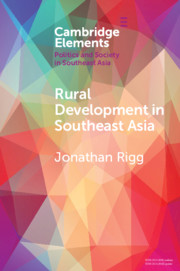Element contents
Rural Development in Southeast Asia
Published online by Cambridge University Press: 21 September 2020
Summary
- Type
- Element
- Information
- Online ISBN: 9781108750622Publisher: Cambridge University PressPrint publication: 01 October 2020
References
- 27
- Cited by



